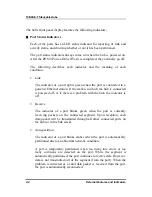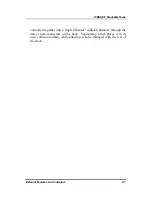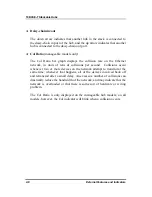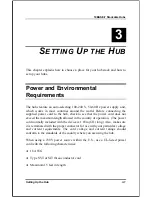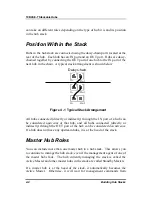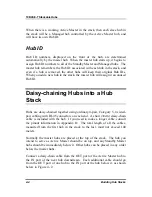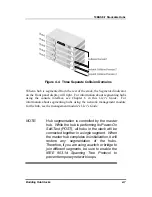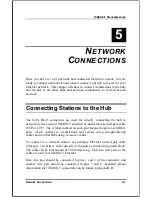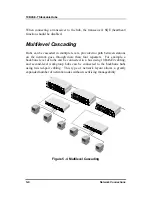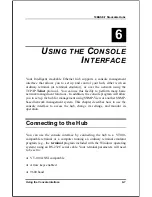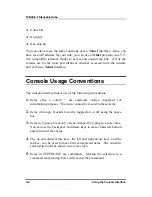
10BASE-T Stackable Hubs
another master hub upstream. If it receives commands from a master hub, it
becomes a Standby Master, controlled by the Active Master. If it does not
receive any commands, or if the Active Master hub fails, it will become the
Active Master.
Note that even if there are more than two master hubs in the stack, the
Standby indicator of the additional master hubs will not light. However, if
the Active Master at the head of the stack fails, the first Standby Master will
become the Active Master, and the next master hub will then become a
Standby Master.
A master hub can only manage hubs that are downstream of it. Therefore,
you should place the hub that you want to serve as the Active Master at the
head of the stack. If you want to use Standby Master hubs, you should place
them directly downstream of the Active Master. Otherwise, you will not be
able to control or monitor any slave hubs upstream of the master hub.
Each master hub has its own IP address. All master hubs respond to SNMP
management commands, though only the Active Master is capable of
controlling and monitoring other hubs. If the Active Master hub fails, then
you will need to use the IP address of the new Active Master to manage the
other hubs in the stack.
Slave Hub Roles
Slave hubs can operate standalone or can be a Managed hub controlled by an
(upstream) Active Master hub.
If there are no master hubs in the hub stack, or if the Active Master hub in
the stack fails and there is no Standby Master hub to take its place, the slave
hubs will be Standalone hubs. (In a case where the Master Hub fails, you
should power the slave hubs off and then on again to insure they are in a
valid state before using them as Standalone hubs.) Standalone hubs all have
a Hub ID of 0. As a standalone hub, all ports will be enabled, and settings
such as hub segmenting, intrusion security, etc. will have no effect.
Building Hub Stacks
4-3


